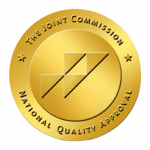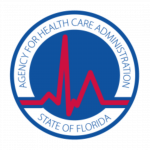A drug overdose, also known as an OD, occurs when a drug user consumes an excessive quantity of prescription or illicit drugs. The increased number of medicines or treatments in an individual’s bloodstream overwhelms their basic functions as a result of a lack of oxygen in the brain. Overdose symptoms and signs can differ, but in most cases, an overdose is not deliberate. Many who are addicted to drugs or alcohol always discover that they continue to consume more of the same medication to experience the desired effects of euphoria. When this occurs, elevated concentrations will result in an overdose.
Individuals who are used recreationally, as opposed to those who are addicted, can overdose. Overdose is probable in any case. Overdose can be easily reversed with the proper medical attention, but knowing what to do if you or someone you know is showing symptoms of overdose is critical. Knowing what to do will help you save a life.
Dial 911 immediately if you or someone you know is feeling the signs and effects of a drug overdose.
The Centers for Disease Control and Prevention reported that almost 72,000 Americans died from opioid overdoses in 2019 – a 5% rise from the previous year. These fatalities have continued to rise year after year, outnumbering deaths from explosives, AIDS, and traffic crashes.
Overdose Symptoms
Overdose symptoms vary depending on the person and the drug. However, there are some common signs that someone is suffering from one. A person does not exhibit any of these overdose symptoms, but even a few of them may mean one.
Overdose symptoms include:
Increased Body Temperature
The heart rate increases after a stimulant drug, such as cocaine or methamphetamine. When this occurs, blood pressure and body temperature rise, as does breathing rate. This symptom may lead to a seizure, stroke, or death.
Dilated Pupils
Different medications have different effects on the pupils. If heroin and opioids cause pupil constriction, other drugs cause pupil dilation or enlargement. In certain instances, pupils can. Nystagmus is a sudden movement or quivering symptom
Blue Fingers or Lips
Lips and fingertips can turn blueish when the body temperature drops due to overdose. This is common in cases of opioid or heroin addiction because opioids bind to particular receptors that impair respiratory ability. If a person is unable to breathe or may not have enough oxygen in their bloodstream, their lips and fingers will turn blue. This is known as cyanosis. This loss of oxygen in the body gradually causes all other organs in the body, such as the heart and brain, to stop functioning. Cyanosis is a sign that a human is on the verge of death.
Nausea or Vomiting
An individual may aspirate during an overdose, causing the body to purge the contents out of its system. If a person vomits while unconscious, the airway can become blocked, increasing the risk of choking.
Seizures
When the body is overburdened with a large number of chemicals, the brain may become disturbed, resulting in erratic behavior. This will result in brain cell failure and seizures. Some people cannot survive epilepsy, even if they do, brain cells will be permanently affected. Furthermore, shaking may be a symptom of an overdose, which is an onset sign of a seizure.
Breathing Difficulties or Shallow Breathing
Multiple depressant drug formulations can often result in airway obstruction and asphyxiation. A person’s head and jaw are in the wrong place, the presence of vomit, or both will cause airway obstruction. When this occurs, breathing becomes restricted, and in some cases, breathing stops entirely. As an effort to control breathing, the body may begin to breathe slowly and laboriously or gasp for air.
Combinations of depressant medications can result in severe sedation. When vast amounts of these are introduced into the system, the individual may become unconscious and anesthetized, and is often unable to be awakened. This risk will cause airway blocking due to a lack of oxygen being taken into the body, resulting in asphyxiation.
Chest Pain
Stimulants that increase heart rate can result in chest pressure and cardiac arrest. When the heart pumps so vigorously as a result of excessive use of stimulants such as cocaine, pace, and ecstasy, it can cause muscle tears, swelling, and extreme chest pain.
Disorientation
An individual who has overdosed but is still unconscious may be unaware of their surroundings. Irregular and often unpredictable behavior, such as hysteria, violent behavior, or anxiety, may occur. This could happen until they lose the ability to work with the rest of their body.
What Should You Do If You Notice Overdose Symptoms
If you or someone you know is having an overdose, dial 911 for emergency assistance. As you wait for assistance, there are many steps you can do to start the life-saving process.
- Keep a close eye on the individual and monitor their heart rate.
- If the person has gone unconscious, start asking questions and see if you can get an answer. Continue answering questions to keep them awake before assistance comes if they are awake.
- Turn the person on his or her side if they are not responsive to avoid choking on vomit.
- If the person is not breathing, perform CPR if you are certified.
- When advised by 911 operators, provide first aid.
- If the person is overdosing on opioids, use Narcan (Naloxone) if it is accessible.
- Obtain as much detail about the person’s use as possible, including dosage, last duration of dose, and type of substance used.
- Try to remain calm until assistance comes.
Narcan or Naloxone can help counteract the symptoms of an opioid overdose, but they should not be used as a substitute for medical treatment. Narcan is a life-saving opioid overdose reversal medication; but, even though the individual seems to be well after taking Narcan, they are still at risk of respiratory failure and should obtain proper medical treatment.
The Good Samaritan Law
Overdose is particularly frightening. Good Samaritan Laws are in place to help save lives by removing the stigma of anyone dialing 9-1-1. If anyone suspects an overdose, they must immediately dial 911. When this occurs, the person is granted medical attention and is shielded from prosecution for drug or alcohol crimes. Furthermore, those who experience an opioid overdose and call 9-1-1 are covered by this statute. Good Samaritan laws vary by jurisdiction, but an individual can be granted amnesty for possessing minor quantities of drugs. The Law, on the other hand, does not shield people from other drug-related or non-drug-related offenses.
Getting Help After An Overdose
It is possible for a person to overdose the first time they take a drug, although this is more likely if the person has a history of substance abuse issues. It is important to get treatment after recovering from the effects of an overdose. Harm Reduction Center is here to support you and help you and understand the severity of the condition are the safest ways to reduce the risk of overdose.














